Early-life exposure to three size-fractionated ultrafine and fine atmospheric particulates in Beijing exacerbates asthma development in mature mice
- PMID: 29540228
- PMCID: PMC5851307
- DOI: 10.1186/s12989-018-0249-1
Early-life exposure to three size-fractionated ultrafine and fine atmospheric particulates in Beijing exacerbates asthma development in mature mice
Abstract
Background: Epidemiological studies have suggested that elevated levels of air pollution contribute to an increased incidence or severity of asthma. Although late-onset adult asthma seems to be more attributable to environmental risk factors, limited data is available on the impact of early-life exposure to size-fractionated ambient particulate matter (PM) on asthma in adults. We aimed to determine the effect on the development and exacerbation of asthma in the adult after the mice were exposed as juveniles to three size-fractionated ambient particulates collected from Beijing.
Methods: The three size-fractionated ambient particulates were collected from urban Beijing in winter, heavily affected by traffic and coal-fired emissions. The typical morphological and major chemical components of the PM were characterized first. Oxidative stress and expression of DNA methyltransferases (DNMTs) were then examined in vitro and in the lungs of mouse pups 48 h after exposure to PM by oropharyngeal aspiration. When the exposed and control juvenile mice matured to adulthood, an antigen-induced asthma model was established and relevant bio-indices were assessed.
Results: PM with different granularities can induce oxidative stress; in particular, F1, with the smallest size (< 0.49 μm), decreased the mRNA expression of DNMTs in vitro and in vivo the most significantly. In an asthma model of adult mice, previous exposure as juveniles to size-fractionated PM caused increased peribronchiolar inflammation, increased airway mucus secretion, and increased production of Th2 cytokines and chemokines. In general, F1 and F2 (aerodynamic diameter < 0.95 μm) particulates affected murine adult asthma development more seriously than F3 (0.95-1.5 μm). Moreover, F1 led to airway inflammation in the form of both increased neutrophils and eosinophils in BALF. The activation of the TGF-β1/Smad2 and Smad3/Stat3 signaling pathways leading to airway fibrosis was more profoundly induced by F1.
Conclusion: This study demonstrated that exposure to ambient PM in juvenile mice enhanced adult asthma development, as shown by increased Th2 responses, which might be associated with the persistent effects resulting from the oxidative stress and decreased gene expression of DNMTs induced by PM exposure. The observed differences between the effects of three size-fractionated particulates were attributed to particle sizes and chemical constituents, including heavy metals and also PAHs, since the amounts of PAH associated with more severe toxicity were enriched equivalently in the F1 and F2 fractions. Relative to the often mentioned PM2.5, PM with an aerodynamic diameter smaller than 0.95 μm had a more aggravating effect on asthma development.
Keywords: Adulthood; Allergic asthma; Early-life exposure; Particulate matter.
Conflict of interest statement
Ethics approval
The protocols and the use of animals were approved by and in accordance with the Institutional Animal Care and Use Committee at the Chinese Academy of Medical Sciences.
Consent for publication
Not applicable.
Competing interests
The authors declare that they have no competing interests.
Publisher’s note
Springer Nature remains neutral with regard to jurisdictional claims in published maps and institutional affiliations.
Figures
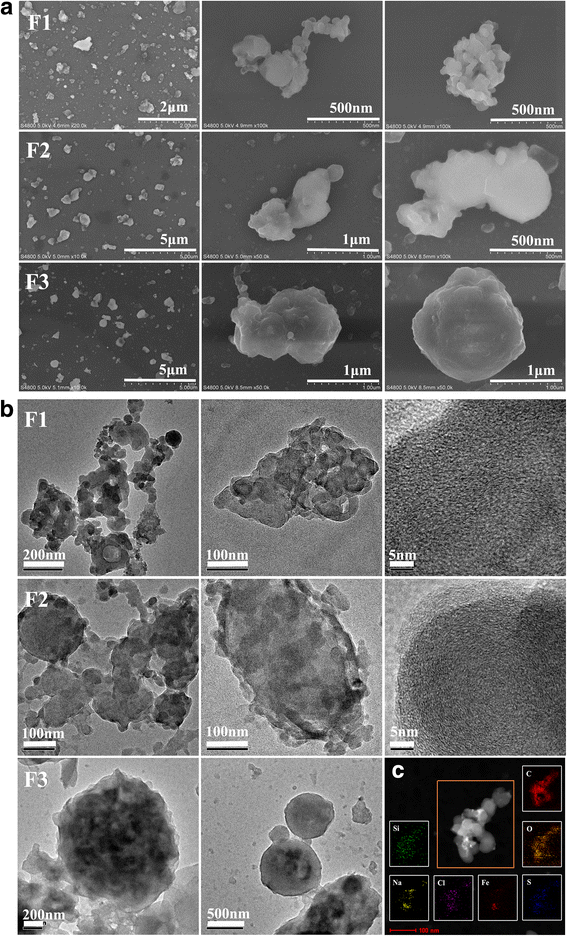
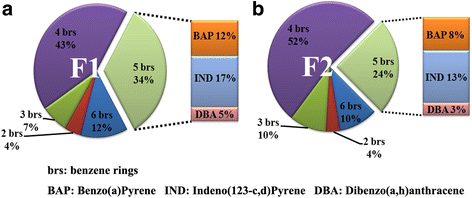
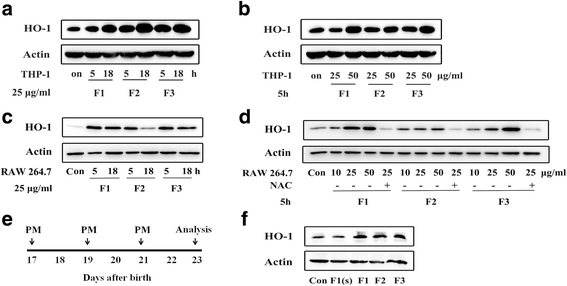
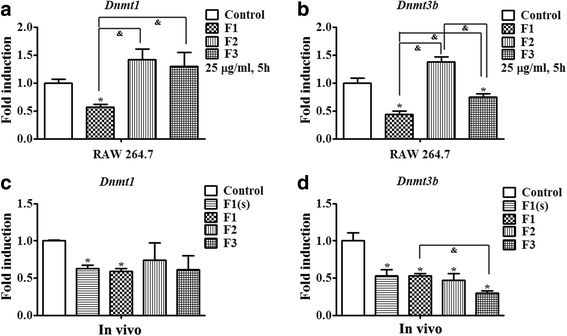
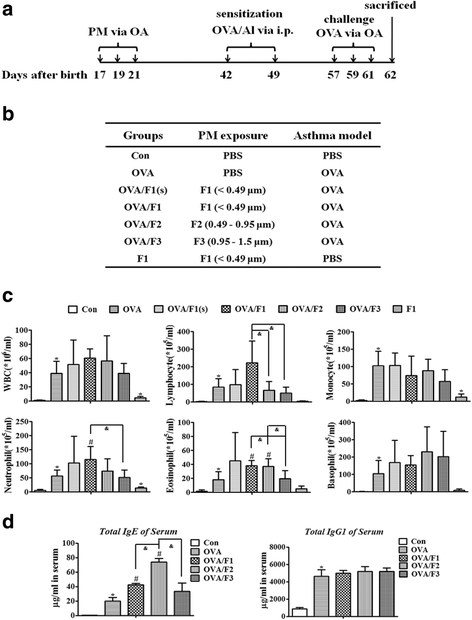
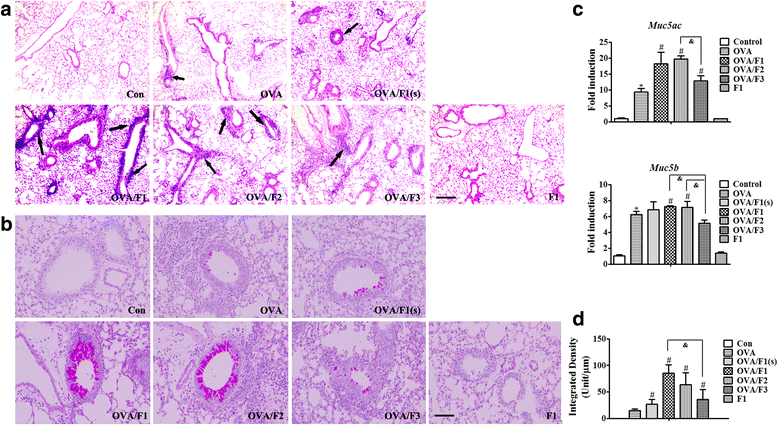
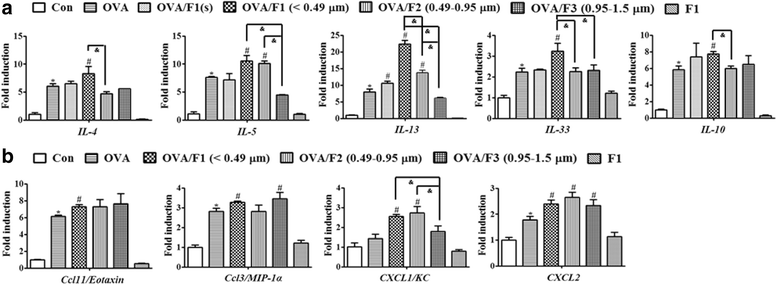

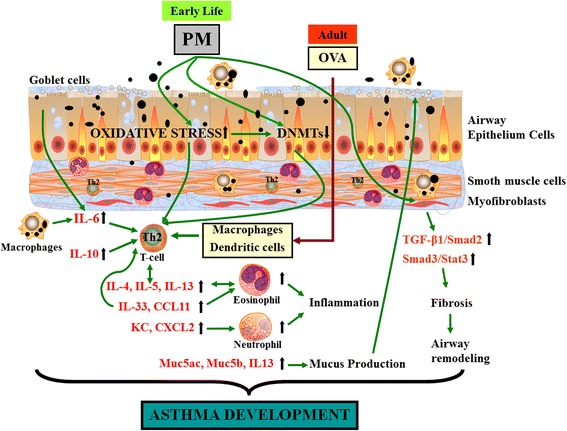
Similar articles
-
Effects of concentrated ambient particles on normal and hypersecretory airways in rats.Res Rep Health Eff Inst. 2004 Aug;(120):1-68; discussion 69-79. Res Rep Health Eff Inst. 2004. PMID: 15543855
-
Inhalation of concentrated ambient particulate matter near a heavily trafficked road stimulates antigen-induced airway responses in mice.Inhal Toxicol. 2007;19 Suppl 1:117-26. doi: 10.1080/08958370701495345. Inhal Toxicol. 2007. PMID: 17886059
-
Influence of season and location on pulmonary response to California's San Joaquin Valley airborne particulate matter.J Toxicol Environ Health A. 2012;75(5):253-71. doi: 10.1080/15287394.2012.640102. J Toxicol Environ Health A. 2012. PMID: 22409489
-
Particle characteristics responsible for effects on human lung epithelial cells.Res Rep Health Eff Inst. 2002 Dec;(110):1-65; discussion 67-76. Res Rep Health Eff Inst. 2002. PMID: 12578113 Review.
-
Airborne particulate matter and human health: toxicological assessment and importance of size and composition of particles for oxidative damage and carcinogenic mechanisms.J Environ Sci Health C Environ Carcinog Ecotoxicol Rev. 2008 Oct-Dec;26(4):339-62. doi: 10.1080/10590500802494538. J Environ Sci Health C Environ Carcinog Ecotoxicol Rev. 2008. PMID: 19034792 Review.
Cited by
-
Kefir peptides alleviate particulate matter <4 μm (PM4.0)-induced pulmonary inflammation by inhibiting the NF-κB pathway using luciferase transgenic mice.Sci Rep. 2019 Aug 8;9(1):11529. doi: 10.1038/s41598-019-47872-4. Sci Rep. 2019. PMID: 31395940 Free PMC article.
-
Long-term associations of PM1 versus PM2.5 and PM10 with asthma and asthma-related respiratory symptoms in the middle-aged and elderly population.ERJ Open Res. 2024 Jul 1;10(4):00972-2023. doi: 10.1183/23120541.00972-2023. eCollection 2024 Jul. ERJ Open Res. 2024. PMID: 38957167 Free PMC article.
-
Passage of exogeneous fine particles from the lung into the brain in humans and animals.Proc Natl Acad Sci U S A. 2022 Jun 28;119(26):e2117083119. doi: 10.1073/pnas.2117083119. Epub 2022 Jun 22. Proc Natl Acad Sci U S A. 2022. PMID: 35737841 Free PMC article.
-
Distribution, Sources, and Health Risk of Short-, Medium- and Long-Chain Chlorinated Paraffins in School-Area Ambient PM1: A Study from the Pearl River Delta, China.Toxics. 2025 May 31;13(6):467. doi: 10.3390/toxics13060467. Toxics. 2025. PMID: 40559940 Free PMC article.
-
Fine Particulate Matter-Induced Exacerbation of Allergic Asthma via Activation of T-cell Immunoglobulin and Mucin Domain 1.Chin Med J (Engl). 2018 Oct 20;131(20):2461-2473. doi: 10.4103/0366-6999.243551. Chin Med J (Engl). 2018. PMID: 30334531 Free PMC article.
References
-
- Pollution HEIPotHEoT-RA. Traffic-related air pollution: a critical review of the literature on emissions, exposure, and health effects. Health Effects Institute; 2010.
Publication types
MeSH terms
Substances
Grants and funding
LinkOut - more resources
Full Text Sources
Other Literature Sources
Medical
Miscellaneous

